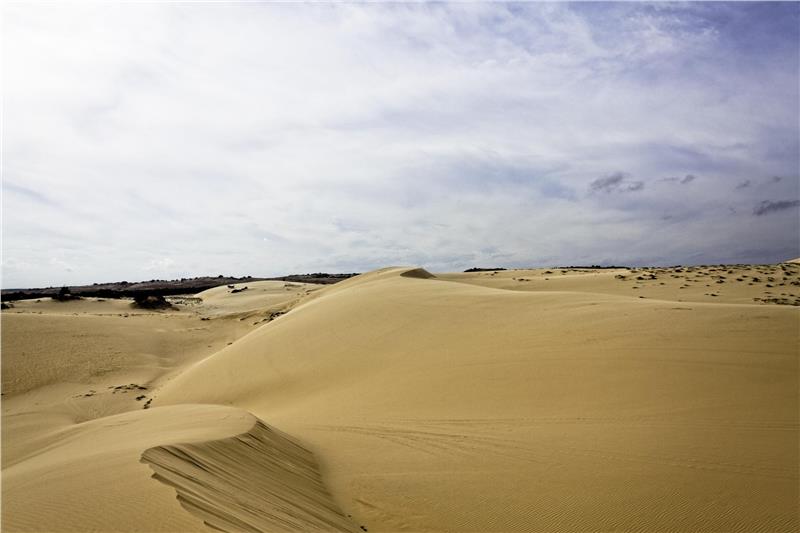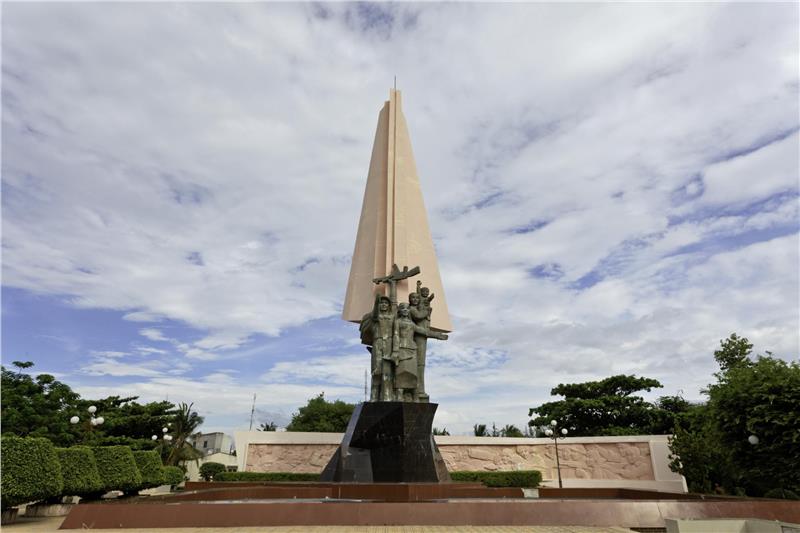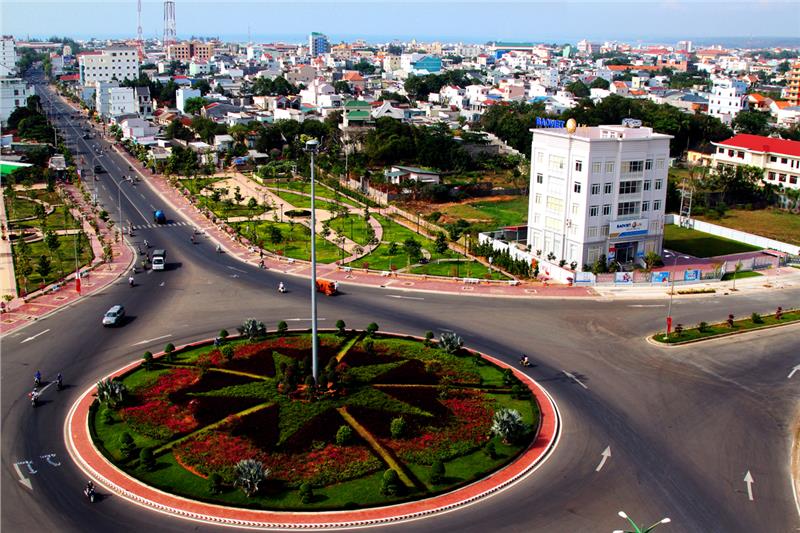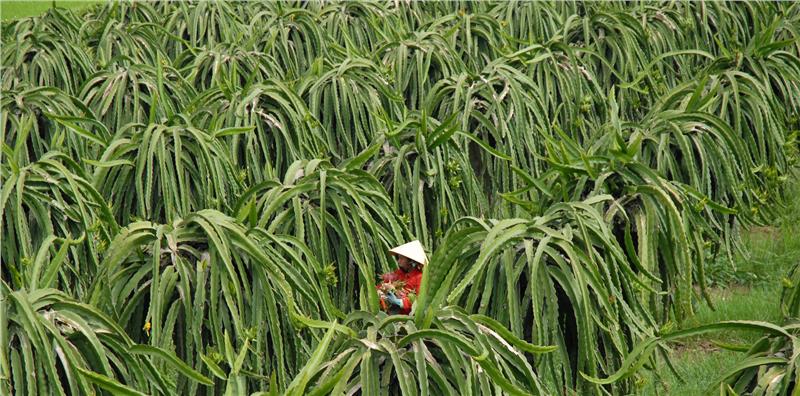Binh Thuan is a coastal province located in the South Central Coast. The center of the province is Phan Thiet city, about 200km away from Ho Chi Minh City to the northeast, 250km far from Nha Trang city to the south and about 1518km from Hanoi city to the South. Binh Thuan has the coastline of 192km long, stretching from Da Chet adjacent to Ca Na (Ninh Thuan) to Binh Chau (Ba Ria – Vung Tau).

Geographical location: Coordinates mainland of Binh Thuan is from 10o33'42" to 11o33'18" north latitude and 107o23'41" to 108o52'18" east latitude. The province is adjacent Lam Dong province to the north, with Ninh Thuan province to the northeast, with Dong Nai province to the west, with Ba Ria - Vung Tau to the southwest and with the East Sea to the east and the south.
Terrain: Terrain in Binh Thuan is mainly the low mountains and hills; narrow coastal plain. The terrain is narrow in the width, located in the northeast – southwest. The province has 4 types of main terrain, including 18.22% of the sandy beach and sand dune, 9.43% of alluvial delta, 31.65% of hills and 40.7% of low mountains.
Climate: Located in the sub-tropical monsoon climate, Binh Thuan climate is sunny, windy, does not have winter and is the driest place in the country. The climate is divided into 2 distinct seasons: the rainy season and dry season. The rainy season begins from May to October; the dry season starts from November to April. The average temperature is 26-27oC.

Binh Thuan province previously belonged to Nhat Nam, after the land of ChiemThanh. Because of the constant wars, Chiem Thanh gradually lost its land. In 1653, the Lord Nguyen Phuc Tan occupied Phan Lang (Phan Rang today) and just left the land in the west of Champa. In 1692, the Lord Nguyen Phuc Chu occupied the rest land and named Thuan Phu and 1694 renamed Thuan Thanh.
In 1697, Lap Binh Thuan consisted of 2 districts An Phuoc and Hoa Da. In 1827, the King Minh Mang established 2 provinces Ninh Thuan and Ham Thuan and 2 districts Tuy Phong and Tuy Dinh. Binh Thuan became a province. In 1883, the treaty signed with the French (July 23) merged Binh Thuan into the South. In 1884, according to Patenotre Treaty, Binh Thuan merged into the Central region. In 1888, the King Dong Khanh moved Ninh Thuan to Khanh Hoa.
In 1990, the King Thanh Thai merged Thuy Ly and Tanh Linh (Dong Nai) into Binh Thuan. In 1905, Di Ling was merged into Binh Thuan. In 1955 – 1975, the Republic of Vietnam government divided Binh Thuan into 8 districts: Ham Thuan, Phu Quy, Thien Giao, Hai Long, Hai Ninh, Hoa Da, Tuy Phong and Phan Ly Cham. In 1976, Binh Thuan was merged into Binh Tuy and Ninh Thuan named as Thuan Hai. On December 15th, 1977, Phu Quy district was established. In April, 1992, Thuan Hai province was divided into 2 new provinces Ninh Thuan and Binh Thuan.

Binh Thuan province has 10 administrative units, including Phan Thiet city, La Gi town, and 8 districts: Tuy Phong, Bac Binh, Ham Thuan Bac , Ham Thuan Nam, Tanh Ling, Ham Tan, Duc Linh, Phu Quy.
Education – Training: The school network in the districts increases over the previous year. The quality of education has clearly changed. The ethnic education and education in the disadvantaged areas are paid attention. The total number of ethnic minority students from pre-school to upper secondary is 22.365, accounting for 8.79%.
Health: The province focuses on investing and upgrading the infrastructure of the health sector. The quality of health care services is improved significantly.

Situated in the South Central Coast economy, Binh Thuan economy always reaches the high growth rate. The provincial GDP increases 12.3%/year. The province has the fish ground with the width of 52.000km2. Binh Thuan Sea is one of the large fish grounds in Vietnam. The reserves of seafood reached from 220 to 240 thousand tons.
Agriculture and forestry of Binh Thuan is diversified. The province has more than 200.000ha of the cultivated land with the main crops including food, cashew nuts, rubber, dragon fruit…In particular, Thanh Long is famous fruit with the production of 140 thousand tons every year.
Binh Thuan industry has the stable development; the average annual growth rate reached 16-17%. The mineral resources is relatively diversified and the much reserves including glass sand, Granit stone, Bentonit clay, mineral water… In recent years, Binh Thuan province attracts many domestic and international investors contributing to the bustling economic development of the province. The province strives to reach the growth rate during the period 2011-2020 from 7.0% to 8.0% / year.
In 2012, the province has 1.193.500 people with 34 ethnic groups living together including Kinh, Cham, Ra Giai, Hoa (focuses on Duc Nghia ward, Phan Thiet city), Ho, Tay, Cho Ro, Nung, Muong. The Kinh people accounts for the majority of the population, so Vietnamese is the official language and common used of Phan Thiet.
2012 the province had 1.1935 million people.

On October 24, 1995, ten thousands of people including scientists, domestic and foreign visitors came to Ta Don (Ham Thuan Bac district) and Mui Ne – Phan Thiet to contemplate and study the total solar eclipse and they realized that Binh Thuan owns many interesting landscapes and the abundant tourism potential.
October 24, 1995, tens of thousands of people, including scientists, tourists flock to the country Don Ta (Ham Thuan Bac district) and Mui Ne-Phan Thiet to admire and study the phenomenon eclipse also realized there was much interesting scenery and abundant tourism potential.
The name “Binh Thuan” has aroused the peaceful feeling for any tourists coming here. Thanks to the favor of the natural terrain along with the temperate climate year round, Phan Thiet has long become the ideal tourist destination for tourists. The province has 192km of the coastline, stretching from Ca Na to Binh Chau. Phan Thiet Bay is quite shallow and windy, so it is convenient to develop the types of sea sports that loved by European people. In addition, there are rich in the scenic spots, historical- architectural relics and cultural festivals.
Currently, Binh Thuan has 125 hotels with 4440 rooms. In particular, Phan Thiet city accounts for 95% with 6 four-star resorts, 9 three-star resorts and 25 two-star resorts. In addition, Phan Thiet city has two 18-holes golf courses: Novotel and Sealinks with the international standard.

The ethnic communities in Binh Thuan own a large number of cultural heritages, especially traditional festivals. The traditional festivals of the ethnic minorities always make the special attraction for tourists. There is Kate festival of the Cham, Nghinh Ong of the Chinese. Currently, in addition to the general cultural festivals, Vietnamese people in Binh Thuan have added Dinh Thay Thim festival. Previously, Binh Thuan festivals were only held in the heart of each ethnic community. Today, with the purpose to promote and create the strength for tourism, Binh Thuan authorities has restored and held these festivals according to the festival chain. The modern festivals are held every year including boat race, lantern parade (Mid- autumn festival). Recently, the big festival titled “Green Converge” (Home by the sea) was took place on October 25th, 2005 to commemorate 10th anniversary of Binh Thuan tourism and the province intends to hold this festival every year.
